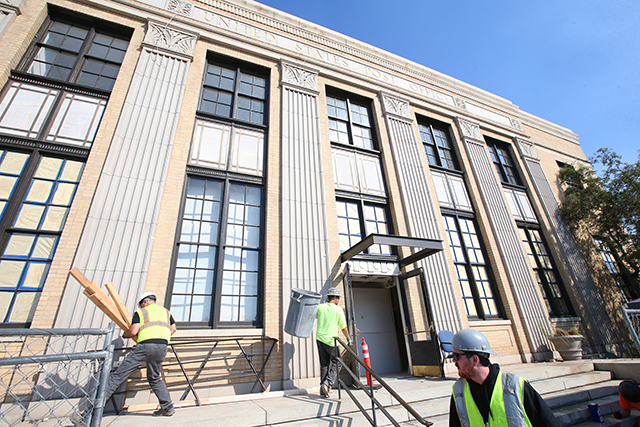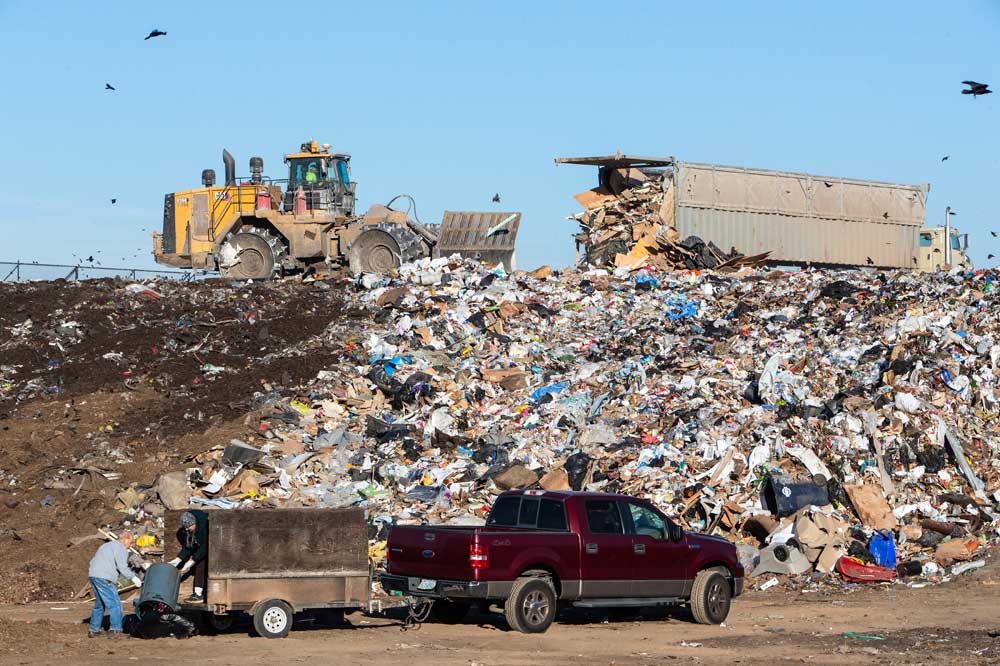As Wrigley is rebuilt, the curious take a look
Published 6:19 am Saturday, February 7, 2015

- Guy Rhodes / The New York TimesConstruction on new seating and a party deck in the right field of the Chicago Cubs’ Wrigley Field in January. The construction at Wrigley Field, which won’t be finished by opening day, has sparked an intrigue among fans who have never seen the Friendly Confines quite like this.
CHICAGO — The funeral procession for Ernie Banks stopped at Wrigley Field last Saturday, offering the venerable Chicago Cubs baseball star one last trip to the stadium he helped nickname the Friendly Confines. Banks, a Hall of Fame player, hit 290 of his 512 home runs at Wrigley, most of them landing in the bleachers here.
Today, Banks might have trouble recognizing the place. Whole chunks of the brick outfield wall are missing, along with the ivy that adorns it; there are no seats for the bleacher bums. Instead, the site is under heavy construction, a tangle of rebar, scaffolding and concrete. Signs at street level announce, “Building a Legacy” and “Making the Confines Friendlier.” The streets beyond the outfield walls, where fans chased home runs from the likes of Banks and Sammy Sosa, are closed to car traffic.
Trending
Six years ago the Ricketts family bought the Cubs and their aging relic of a stadium, which celebrated its 100th birthday last year, and ever since they have sought to give Wrigley a face-lift. After years of wrangling with the city and rooftop owners across the street, construction began this offseason as part of a $575 million rehab and expansion of the park and surrounding area. There will be a new party deck in right field and several outfield signs, including a large video board in left field. A hotel is planned.
At their fan convention last month, the Cubs announced that the sleeker, shinier Wrigley bleachers — with 300 more seats than before — would not quite be ready for opening day. Construction stalled when a water main had to be repaired. High winds and cold weather have caused their own delays. The team postponed a steel order when it needed one more round of approval for the outfield signs from the city’s landmark commission. As a result, the bleacher sections will not be back in use until no sooner than May 11.
But as crews work overtime — 10-hour days, seven days a week — and the cement trucks whir, the construction has sparked an intrigue of its own. Curious passers-by, many in Cubs hats and jackets, peek through a chain-link fence that walls off the site, taking pictures for posterity. As Jason Alspaugh, a season-ticket holder, said: “It’s a historic moment. When will Wrigley ever look like this again?”
“The construction is ugly,” he added. “But it’s going to be gorgeous.”
A few hours after Banks made his final visit to Wrigley, Matt Bonnstetter, a manager at Murphy’s Bleachers, a bar just beyond the right-center-field wall, led a group of about 15 — tourists and locals alike — to its rooftop for a bird’s-eye view of the construction. Bonnstetter said the demand for the views was greater now than during the season.
“Everyone wants to see the construction,” he said. “It’s still a little weird to see it like this.”
Trending
Atop the brick three-flat, the group looked down at the snow-covered infield, snapping pictures with their smartphones. A construction worker on the project, still in his yellow vest, pointed out plumbing pipes and electrical wire snaking through what resembled an irrigation canal. Scaffolding extended up the grandstand. The center-field bleachers are still intact, but the left- and right-field versions have disappeared.
Because of Wrigley’s revered status, the worker said, his bag is checked when he leaves the site every day to make sure he does not pocket any souvenirs, like a piece of ivy or a brick from the foundation.
Alspaugh, who lives a few blocks from the stadium, began photographing the construction at its outset because he had so many friends who wanted to see the transformation unfold. He started a Twitter account, WrigleyRenovate, to post the images. He has more than 11,000 followers.
“Cubs fans really want to know what’s happening,” he said. “They need to know how Wrigley is doing.”
While much of the bleachers will be new — and some worry the large video board could erode some of Wrigley’s charm — the Cubs have promised to honor tradition. The bleachers are protected by landmark status. The ivy that was removed is being stored inside the stadium and will be reattached. Bricks from the wall, erected in 1937, will be inspected in the hope that they are still structurally sound.
The Cubs are also not entirely out of the legal woods yet. Owners of nearby rooftop properties have sought to stop construction with lawsuits against the city and the team over the new outfield signs blocking their views of the field, saying they violate their contract with the Cubs. The Ricketts family, meanwhile, has continued to buy rooftop properties.
“The construction project is well underway and we’re going to move forward confidently with construction and expansion plans, while vigorously contesting the lawsuits,” said Cubs spokesman Julian Green.
The Cubs will open the season April 5 at home against the rival St. Louis Cardinals, a Sunday night game on ESPN2. The bleachers will be empty, as the concrete must cure before bolts and railings can be added. Green said the national television audience might see seating still being installed or painted.
“But it will still look like Wrigley Field,” he said.








